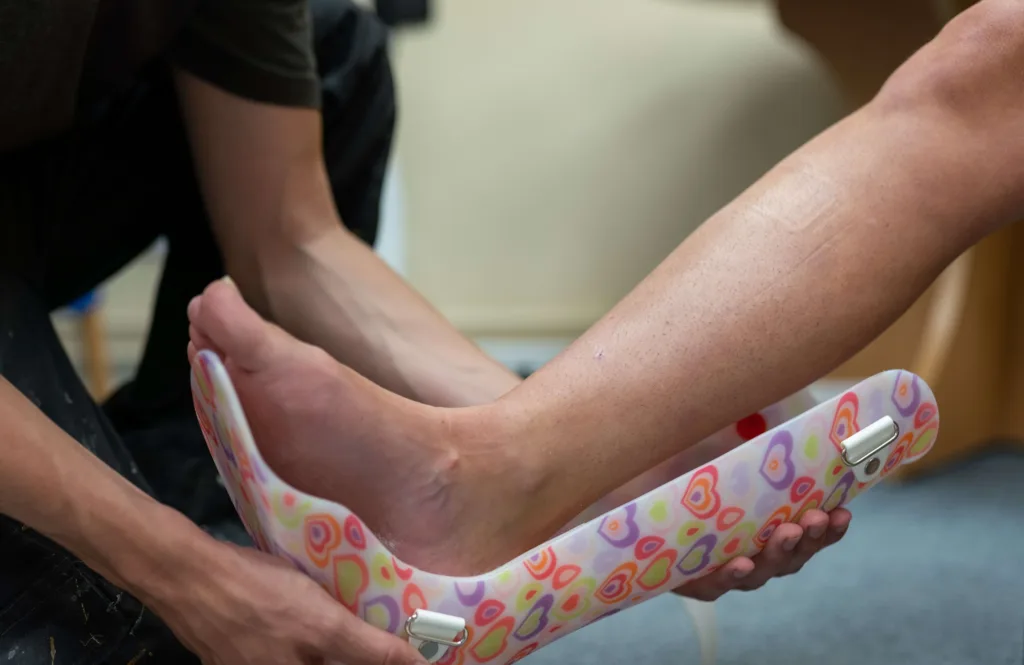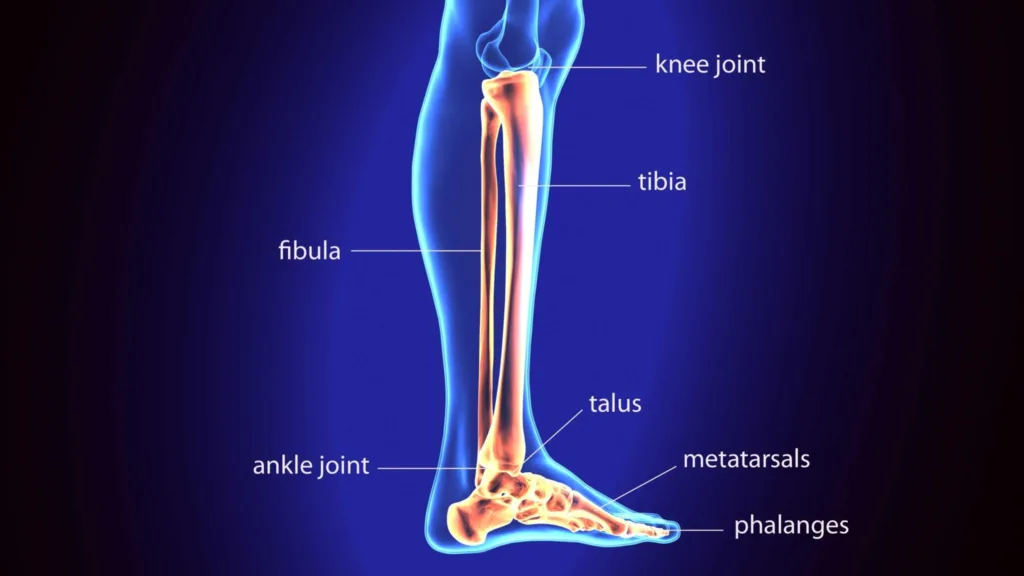A fibula bone fracture can be a painful experience that requires proper care and attention to ensure a speedy recovery. The fibula bone is located on the outside of the lower leg and is prone to fractures due to its location and the amount of stress placed on it. In this article, we will discuss everything you need to know about a broken fibula and how to sleep with a broken fibula.
When you first suffer a broken fibula, it is essential to seek medical attention immediately. The extent of the injury will determine the course of treatment, which may include surgery or a walking boot. After the initial phase, it is crucial to stay mobile to speed up the recovery process. Using a walking boot will provide support and help you stay mobile without putting too much pressure on the injured area.
One of the most challenging aspects of having a broken fibula is trying to sleep comfortably. The pain and discomfort can make it challenging to fall asleep or stay asleep throughout the night. Here are some tips that can help you sleep better with a broken fibula.
Elevate the injured leg as much as possible, especially when sleeping. This will help reduce swelling and pain by promoting proper blood flow. You can use pillows or a foam wedge to keep your leg elevated while sleeping.
Try to sleep on your back. Sleeping on your back will help reduce pressure on the injured area and provide more support to your spine. If you have to sleep on your side, place a pillow between your legs to keep your hips aligned and reduce pressure on the injured leg.
Use ice packs or a cold compress before going to bed. Applying ice to the injured area can help reduce pain and inflammation, making it easier to fall asleep. Wrap the ice pack in a towel or cloth and apply it to the injured area for 20 minutes before bed.
Take pain medication before going to bed. If the pain is severe, taking pain medication before bed can help you sleep better. Be sure to follow your doctor’s instructions when taking medication.
Avoid alcohol and caffeine before bed. Both alcohol and caffeine can interfere with sleep and make it more difficult to fall asleep. Try to avoid these substances before bed to ensure a better night’s sleep.
A broken fibula can be a painful experience, but with proper care and attention, you can recover quickly. Staying mobile and using a walking boot can help speed up the recovery process, and following the tips outlined aboe can help you sleep better with a broken fibula. Remember to consult with your doctor before trying any new treatments or medications.
What Not to Do With a Broken Fibula
When it comes to a broken fibula, there are certain things that you should avoid doing to ensure that the bone can heal properly. Here are some things that you should not do with a broken fibula:
1. Do not put weight on the affected leg: Putting weight on the broken fibula can cause further damage and delay the healing process. It is important to keep the affected leg elevated and avoid any weight-bearing activities.
2. Do not ignore the pain: Pain is the body’s way of telling you that something is wrong. Ignoring the pain can lead to complications and delay the healing process. Make sure to take any pain medication prescribed by your doctor and rest as much as possible.
3. Do not remove any casts or splints withut consulting your doctor: Casts and splints are used to immobilize the affected leg and promote healing. Removing them without consulting your doctor can lead to further damage and delay the healing process.
4. Do not engage in strenuous activities: Strenuous activities can put stress on the affected leg and cause further damage. It is important to avoid any activities that can cause stress on the affected leg until it has fully healed.
It is important to follow your doctor’s instructions and avoid any activities that can cause further damage to the broken fibula. With proper care and treatment, most people can make a full recovery from a broken fibula.

Accelerating the Healing Process of a Broken Fibula
The fibula is a bone in the lower leg that runs parallel to the tibia. A broken fibula can result from a variety of reasons, such as a sports injury or a fall. The recovery time for a fibula break can vary depending on the extent of the injury and the treatment received. However, there are some ways to speed up the healing process.
The first step in healing a broken fibula is to seek medical attention immediately after the injury. A doctor will perform an X-ray or CT scan to determine the extent of the injury and suggest a treatment plan. In some cases, surgery may be required to fix the broken bone.
After surgery or immobilization, one of the fastest ways to heal a broken fibula is to reduce swelling. Swelling can slow down the healing process and cuse pain and discomfort. Compression and elevation of the injured leg can help reduce swelling. Compression can be achieved by using an elastic bandage or compression stockings. Elevating the leg above the heart level for several hours a day can also help reduce swelling.
Pain management is also crucial in the healing process. Over-the-counter pain relievers like acetaminophen or ibuprofen can help ease pain and reduce inflammation. However, it’s essential to follow the doctor’s advice when taking medication.
Another effective way to speed up the healing process is to engage in physical therapy. Physical therapy helps to improve muscle strength, flexibility, and range of motion in the affected leg. A physical therapist can also teach techniques to reduce the risk of reinjury.
Healing a broken fibula can take time, but by following a doctor’s advice and engaging in healthy practices like compression, elevation, pain management, and physical therapy, patients can speed up the healing process and regain mobility in their leg.
The Impact of Nighttime on Fracture Pain
Fractures can be painful, especially at night. This is because of the natural circadian rhythm of the body. During the night, there is a drop in the stress hormone cortisol which has an anti-inflammatory response. This means there is less inflammation and less healing. As a result, the damage to bone due to the fracture accelerates in the night, with pain as the side-effect.
Additionally, when we lie down, there is less blood flow to the injured area, which can also contribute to increased pain. This can be exacerbated if the fracture is in an area that is constantly uner pressure, such as the hip or back.
Furthermore, if you have been active during the day, the fracture may have been subject to more stress, leading to increased pain at night.
To manage the pain at night, it is important to follow your doctor’s instructions for pain management, such as taking pain medication as prescribed. Additionally, elevating the affected limb and applying ice can help reduce inflammation and pain.
The pain from a fracture may be more pronounced at night due to the drop in cortisol, decreased blood flow, and increased stress on the fracture during the day. Proper pain management and self-care can help alleviate nighttime pain and aid in the healing process.
Recovery Time for a Broken Fibula
A broken fibula is a common type of lower leg fracture that can occur due to sports injuries, falls, or accidents. If you have suffered a broken fibula, you may be wondering how long you need to stay off it to alow it to heal properly.
According to Dr. Rios, a typical healing time for a broken fibula involves non-weight-bearing or limited weight-bearing for six weeks. During this period, you may need to use crutches or a wheelchair to avoid putting weight on your injured leg. It is important to follow your doctor’s advice and not to put any weight on the broken fibula until it has healed sufficiently.
After six weeks, most fractures will have some degree of protected weight-bearing for 10-12 weeks. This means you may be able to put some weight on your injured leg, but you will still need to be careful and avoid putting too much pressure on it. During this time, you may need to use a walking boot or brace to provide additional support to your leg.
It is essential to give yourself at least another month to fully rehabilitate after the initial healing process. This rehabilitation period may involve physical therapy, exercises, and other techniques to help you regain strength and flexibility in your injured leg.
The total recovery time for a broken fibula can vary depending on the severity of the injury and how well you adhere to your doctor’s instructions. However, in general, you should expect to stay off your broken fibula for at least six weeks, have a protected weight-bearing period for 10-12 weeks, and then spend another month rehabilitating your leg.

Conclusion
A broken fibula can be a painful and challenging injury to deal with. However, with proper treatment and care, it is possible to make a full recovery. It is important to seek medical attention as soon as possible and follow the recommended treatment plan, which may include the use of a walking boot, elevation, and compression to reduce swelling. It is also essential to maintain mobility and engage in rehabilitation exercises to promote healing and regain strength in the affected leg. With patience and perseverance, a broken fibula can be overcome, and one can return to teir normal activities and lifestyle.
